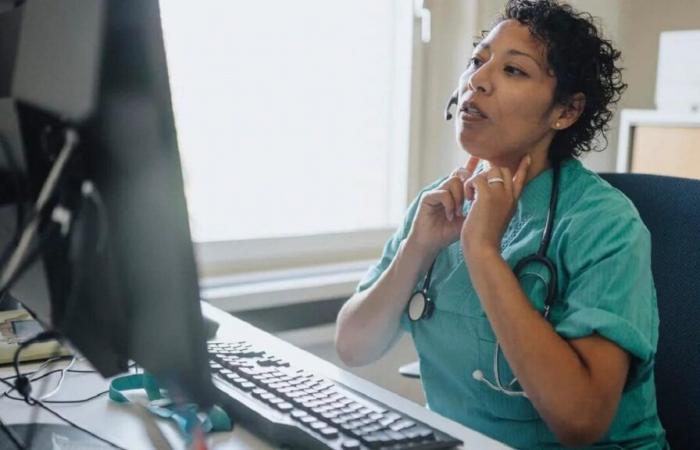A new national study in the United States by researchers from the American Cancer Society reveals that access to the internet in your area increases your chances of receiving an early diagnosis of lung cancer, which can prove life-saving.
The study identified 305,198 patients from the National Cancer Database who had recently been diagnosed with non-small cell lung cancer (NSCLC). common, accounting for approximately 85% of cases. Unlike small cell lung cancer (SCLC), which is more aggressive and grows quickly, NSCLC generally progresses more slowly. The researchers then cross-referenced that data with data from Microsoft’s Airband Initiative, which shows the availability of broadband speeds — 25 megabits per second download and 3 Mbps upload at the time — in each zip code.
“We found that increased access to broadband, combined with the expansion of teleconsultation services during the COVID-19 pandemic, was linked to the quality of cancer care”Qinjin Fan, one of the authors of the study, told CNET.
Internet access, a social determinant of health
This analysis adds to a growing body of research that identifies internet access as a “social determinant of health.” This term generally refers to disparities in food, housing and transportation, which can affect life expectancy.
“Clinical service delivery only contributes to 20% of health outcomes – 40% falls under what we call socioeconomic status”Carole Myers, a professor at the University of Tennessee at Knoxville and an expert on health care access and disparities, told CNET. “This includes factors such as your income level, education level and the resources available in your community.”
Patients identified in this study were diagnosed between 2019 and 2021. Researchers tracked the different stages of treatment, such as surgery, chemotherapy, and neoadjuvant chemoradiation, as well as the stage of the cancer at the time of diagnosis.
Although this study did not assess the impact of broadband access on the number of patients surviving lung cancer, it analyzed how often patients received recommended care, which has been shown to that they improve the chances of survival.
Teleconsultation has a major impact on health outcomes
Researchers attribute early diagnosis of lung cancer and improved quality of care primarily to teleconsultation services.
“Access to broadband is closely linked to the use of teleconsultation”Qinjin Fan told CNET. “This approach benefits both patients and providers by reducing travel distance, time and costs. We think this explains why we found stronger associations among people residing in non-metropolitan areas.”
This phenomenon has been particularly evident during the COVID-19 pandemic, which has seen an unprecedented expansion of teleconsultation services. Before the pandemic, less than 1% of outpatient consultations were done remotely. More recently, this figure has increased to 8%.
A recent large-scale survey found that 45% of adults believe that insufficient access to technology, including broadband and computers, is a barrier to teleconsultation. This opinion was particularly common among residents of rural areas and people aged over 65.
Although one might not think of cancer as a disease that can be treated online, studies have shown that teleconsultation saves a lot of time and money during long cancer treatments, with an average saving from $147 to $186 per visit.
“Many of my patients do not need to come for post-operative visits”said Dr Philippe Spiess, senior surgeon and co-author of a study on teleconsultation and cancer treatments. “I plan to use teleconsultation for these visits as part of my daily practice, now and in the future.”
At first glance, internet use may not seem directly related to cancer treatment, but it turns out that it is a fundamental part of health.
“Access to broadband is really important for teleconsultation”said Carole Myers. “But it is also essential for economic development, for attracting businesses and for education. These elements, in turn, influence health.”
TP-Link Deco BE85: read the test
The TP-Link Deco BE85 is a tri-band WiFi 7 system offering speeds of up to 19 Gbps, split between the 6 GHz, 5 GHz and 2.4 GHz bands. It offers advanced connectivity with 10 Gbps Ethernet/fiber ports, 320 MHz channels, and Multi-Link Operation technology to improve throughput and reliability. It is ideal for Very High Speed Fiber connections, and guarantees universal compatibility with all WiFi devices and Internet service providers.






